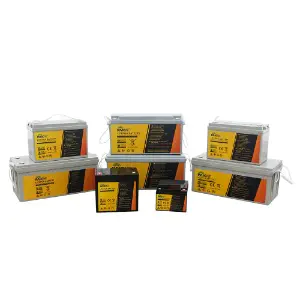Mechanical Resilience of Lithium Iron Phosphate Cells
The Lithium Iron Phosphate Battery is often praised for its good thermal and chemical stability, but another important aspect of its performance is how well it stands up to physical stress. In applications such as electric vehicles, portable equipment, and energy storage systems, batteries are sometimes subjected to accidental drops, vibrations, or collisions. Understanding how a Lithium Iron Phosphate Battery reacts to such mechanical shocks is critical for evaluating its safety, reliability, and suitability in rugged environments.

Structural Strength and Material Properties
One of the reasons the Lithium Iron Phosphate Battery is considered mechanically robust lies in its cathode material. Iron phosphate is a chemically stable and structurally strong compound. Unlike some other lithium-ion chemistries that use cobalt-based compounds, which can crack under pressure or stress, the olivine crystal structure of LiFePO₄ is known for its high tolerance to physical deformation. This intrinsic strength gives the battery a greater resistance to damage from impact or compression.
Behavior Under Mechanical Stress
Tests conducted under industry standards, including crush and penetration assessments, show that the Lithium Iron Phosphate Battery is less likely to catch fire or explode when compared to alternatives such as lithium cobalt oxide (LCO) or nickel manganese cobalt oxide (NMC) batteries. Even when the battery casing is punctured or deformed, LiFePO₄ cells tend to maintain internal stability, preventing the kind of rapid thermal reactions that often cause hazardous outcomes in other battery types.
However, it’s important to note that “resistance” does not mean “invulnerability.” While the chemistry is safer, mechanical impact can still cause problems such as internal short circuits, swelling, or reduced performance if the impact is strong enough to compromise the separator or electrode layers. As with all battery systems, protective casing and shock-absorbing designs remain essential in high-risk environments.
Advantages in Safety-Critical Applications
Because of its strong mechanical integrity and low risk of thermal runaway, the Lithium Iron Phosphate Battery has been widely adopted in safety-critical applications, such as public transportation, grid storage, and medical equipment. In these contexts, batteries may be subject to jostling or impact, and the enhanced safety margin of LiFePO₄ provides peace of mind for both designers and users.
For example, in electric buses or forklifts, where vibrations and impacts are a routine part of operation, these batteries are often chosen not only for their long cycle life but also for their resistance to mechanical stress. In such applications, manufacturers typically reinforce the battery pack with metal enclosures and anti-shock mounting systems, further minimizing risk.
Role of Battery Management and Design
Beyond chemistry, the full impact resistance of a Lithium Iron Phosphate Battery also depends on how the battery pack is engineered. Cell layout, module spacing, vibration-damping materials, and integrated battery management systems (BMS) all play a role in ensuring that the battery can withstand mechanical abuse without failing. A well-designed LiFePO₄ pack offers good mechanical protection and predictable behavior under duress, even in challenging conditions like off-road vehicles or military equipment.
Durable, But Not Indestructible
The Lithium Iron Phosphate Battery offers strong resistance to external mechanical impacts, outperforming many other lithium-ion technologies in this regard. Its material composition, internal stability, and low risk of fire make it a top choice for environments where physical stress is likely. Still, proper system design and protective housing remain necessary to ensure suitable performance and long-term safety, particularly in applications involving frequent shocks or vibrations.
Get to know quickly
We are a professional lithium iron phosphate battery, solar energy storage system, industrial and commercial energy storage system manufacturer.
 +86-133 3592 3377
+86-133 3592 3377
 +86-4008833583
+86-4008833583
 Email: [email protected]
Email: [email protected]

Copyright © Zhejiang Paichen Energy Storage Group Co., Ltd All Rights Reserved.
Battery Energy System Manufacturer
